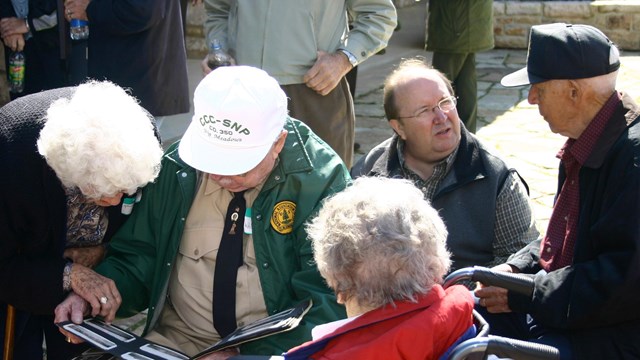What would prompt an eighteen year old to leave home, work 5½ days a week of manual labor, in all seasons and all weather, just to earn $30 per month, out of which only $5 he could keep for himself? Answer: the Great Depression, one of the longest-lasting, most profound economic downturns in the history of the Western industrialized world. Part of President Franklin D. Roosevelt’s response to these dramatic events was for the government to adopt a variety of programs, together coined the New Deal. New Deal programs came in three categories: relief, recovery, and reform.
The CCC, Civilian Conservation Corps, was a relief program funded from 1933-1942. FDR formed the CCC as a part of his First 100 Days legislation. The program was designed for the immediate relief of families with unemployed young men. Enrollment in the CCC was originally limited to unmarried, healthy men with families aged 18 to 23. The men would agree to a minimum of a six-month term of service, focusing on soil conservation and reforestation with vigorous, disciplined outdoor labor. The CCC provided uniforms, shelter, three meals a day, and training. They got paid $30/month, $25 of which was sent directly home to their parents. They got $5 for their own use!
Much of the work that the Civilian Conservation Corps accomplished was located in national, state, and local parks. In 9 years the CCC planted nearly 3 billion trees and developed more than 800 parks across the United States. This work included building shelters, stocking rivers and lakes with nearly 1 billion fish, clearing beaches, digging canals and ditches, restoring historic battlefields, and countless other projects.
Between May of 1933 and March of 1942, 12 CCC camps in 9 different locations opened in and around what was to become Shenandoah National Park. Each camp was home to around 200 boys at any given time. The U.S. Army controlled the camps and regimented the lived of those who lived there. During the nine years the Civilian Conservation Corps existed in Shenandoah, they helped build the infrastructure for the future national park. Their achievements included the instillation, construction, and landscaping of areas all along Skyline Drive, overlooks, picnic grounds, and developed areas.In their cumulative accomplishments are some impressive statistics:
- 28 sewage systems
- 136 miles of phone lines
- 1,145 miles of fire trails
- 101 miles of trails
- 4001 signs and markers
- 147,595 trees and shrubs planted
- 361 acres of land seeded
These numbers do not reflect the high school diplomas earned, work skills taught, and lives saved through the CCC. An unanticipated consequence of work in and with the CCC was preparation for the massive call-up of civilians to military service during World War II. The more than 6,500 boys who came to Shenandoah not only created the park as we know it today, they became men who have left their legacy for our future generations to enjoy.


